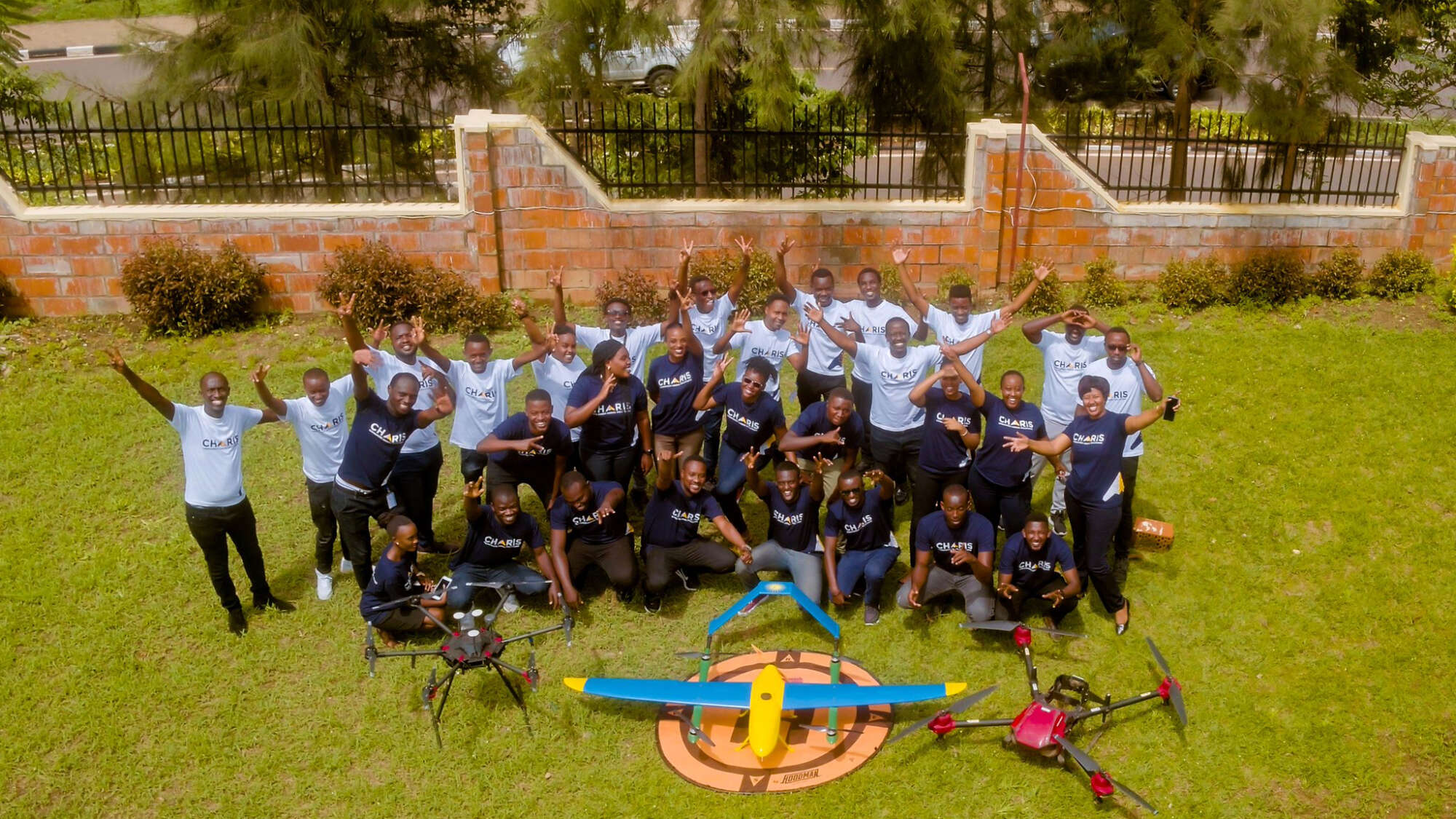Mamy Ingabire is an entrepreneur dedicated to using cutting-edge technology to address critical challenges across various industries.

As the Managing Director of Charis UAS, Rwanda’s first licensed drone company, she has played a fundamental role in advancing the use of Unmanned Aerial Vehicles (UAVs) to improve efficiency in vector control, agriculture, construction, mapping, healthcare, and more. Under her leadership, Charis UAS has leveraged drone technology to revolutionize data collection and digital solutions.
With a background in Applied Life Sciences and Biotechnology from Midrand University in Johannesburg, South Africa, Ingabire complements her technical expertise with extensive experience in project management and leadership.
She has spearheaded numerous UAV-based initiatives that have created educational and employment opportunities for young professionals while also ensuring the highest safety and regulatory standards in drone operations. Beyond Rwanda, her work has expanded across multiple African countries, reinforcing her vision of using technology to drive sustainable development. Through her leadership, Charis UAS continues to bridge the gap between digital transformation and practical solutions for pressing global challenges.
Read the interview below where Ingabire shares her inspiring journey, the impact of drones in malaria control, and the challenges and successes of implementing high-tech solutions to combat vector-borne diseases in Africa.
The Interview
Q: Can you share a bit about your background and what inspired your career path?
Ingabire: “Born and raised as the only girl in a family of seven boys, I was taught to believe in my potential and embrace the idea that there are no limits to what I can achieve as a woman. The encouragement from my parents and mentors has been instrumental in shaping my career path.
Growing, I was deeply fascinated by science – understanding how things work and using that knowledge to improve people’s well-being. This passion led me to study biochemistry and graduated in Applied Life Sciences in South Africa.
With over 15 years of experience working with international health organizations, I have gained valuable insight into the challenges communities face due to diseases. This exposure has fueled my commitment to leveraging technology in public health, driving innovative solutions, and ultimately saving lives.”
Q: Can you explain the role of drones in combating vector-borne diseases like malaria?
Ingabire: “When it comes to drones, opinions may vary, as many associate them with warfare and surveillance. However, drone technology can also be a powerful tool for positive impact.
Drones are highly effective tools for rapidly mapping mosquito breeding sites in wetlands, farms, dams, and peri-domestic urban areas, including hard-to-reach locations. Drone data is used to create smart aerial maps powered with AI, allowing quick interventions and precise spraying of mosquito breeding sites to improve environmental safety.
By tackling mosquito populations at the larval stage, before they mature and spread disease, drone-based larviciding plays a crucial role in reducing vector-borne diseases. They disrupt the breeding cycle of disease-carrying mosquitoes, significantly improving public health outcomes. Mosquito breeding sites are the root of the problem, early and rapid detection and management including treatment are essential in suppressing disease transmission.
Drones are used in mapping, spraying and community mobilization (messaging and community engagement) in malaria control.”
Q: What challenges have you faced in implementing drone technology for vector control, and how have you overcome them?
Ingabire: “Most countries have strict drone regulations, requiring approvals and licenses that can delay implementation. To address this, we actively engaged with government agencies, civil aviation authorities, and health ministries to advocate for supportive regulations. As operators, we always ensure compliance with safety protocols, providing evidence of effectiveness and participate in policy discussions.
Community acceptance is also key, as misinformation can create skepticism. To build more trust with the community, we had to conduct community awareness campaigns, engage local leaders in collaboration with Ministry of Health, have locals taking part of the intervention from the start.
Easy access to drone data for supporting malaria control programs was initially a challenge. To address this, we developed Charis Analytics, an online platform that provides easy access to maps of mosquito breeding sites and enables monitoring of intervention effectiveness.”
Q: How do you measure the success or impact of drone-based interventions in vector control?
Ingabire: “We usually work closely with National Malaria Programs, and in Rwanda particularly, we work in collaboration with the Rwanda Biomedical Center (RBC) to assess the impact of drone-based interventions. RBC monitors entomological and epidemiological outcomes, including larval density, adult mosquito populations, and malaria incidence in the intervention areas.
In our recent project in collaboration with RBC, drone-based interventions achieved remarkable results: Anopheles larval density decreased by 98.7%, adult Anopheles mosquitoes reduced by 79.9%, and malaria incidence significantly declined in Kabuye sector in Rwanda.”
Q: Are there lessons from Rwanda’s success with drones in vector control that can be applied to other sectors or countries?
Ingabire: “Yes, there are key lessons to learn. Collaboration between the government and private sector (Public-Private Partnerships) innovators speeds up the use of technology in public health. Supportive regulations and policies foster innovation while ensuring safety and compliance. Rwanda Civil Aviation Authority created a supportive environment for impactful drone operations. Technology must be adapted to local needs, such as high-altitude flights and data analytics for mosquito control, to be effective. Finally, involving communities and training locals ensures ownership, sustainability, and adoption of technology. These lessons can benefit other countries and sectors, including agriculture, disaster response, and infrastructure monitoring.”
Q: How do you ensure community involvement and acceptance when introducing high-tech solutions like drones?
Ingabire: “We first make sure that our tech solutions meet local needs. Working closely with local leaders from the beginning is key, along with organizing awareness campaigns to stay connected with the community, to understand their concerns, and address their needs. It’s also important to demonstrate how technology, like drones, can directly solve real problems, such as malaria. Additionally, offering training and job opportunities helps locals feel a sense of ownership over technology. Empower them to positively transform their communities.”
Q: What advice would you give to other leaders looking to innovate in public health through technology?
Ingabire: “Always start with the problem not the technology. Tech solutions should never be developed in isolation. It should be human centered. Pilot, measure and scale strategically. Ensure Regulatory readiness and compliance.”
Q: What has been the most rewarding moment of your career so far?
Ingabire: “One of the most rewarding moments of my career has been witnessing the direct impact of our malaria control interventions on communities. Seeing farmers and their families smile as they share how they or their children no longer suffer from malaria—and how this has enabled them to work longer hours and improve their livelihoods—has been truly fulfilling. Hearing their testimonies about how our technology has not only improved their health but also enhanced their productivity reinforces why I do what I do. Knowing that our innovations are making a tangible difference in people’s lives is the greatest reward.”
Q: Who or what inspires you to continue your work in advancing technology for public health?
Ingabire: “Think about this: Every minute, a child dies of malaria. Of the 241 million cases recorded globally each year, 627,000 result in death (2020). Africa bears the heaviest burden, with 95% of cases (228 million) and 96% of deaths (602,000), with children under five accounting for 80% of fatalities.
As an African, I can relate to this. Growing, I was also affected by this disease. Understanding the root causes of this deadly disease and the potential of technology to create lasting solutions fuel my commitment to advancing public health innovations. The possibilities and opportunities to reduce suffering and save lives for our communities through technology is my greatest motivation.”
Disclaimer: The views and opinions expressed in this interview are those of the interviewees and do not necessarily reflect the views or positions of Public Health Landscape or Valent BioSciences, LLC.
